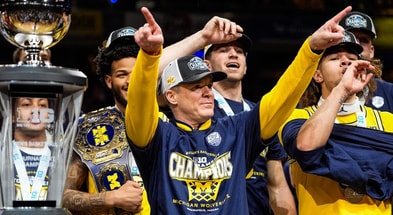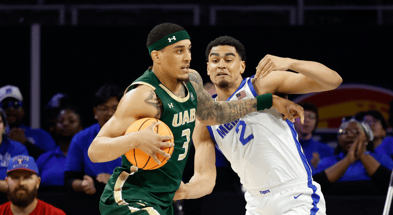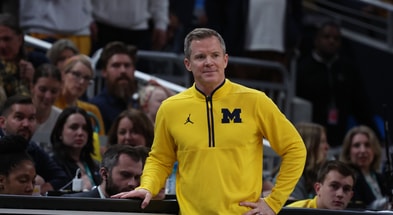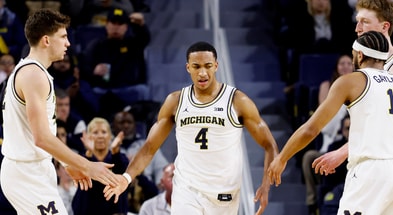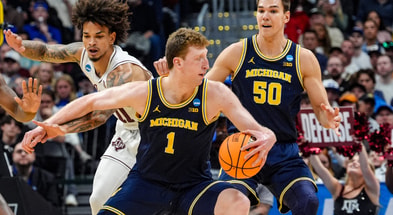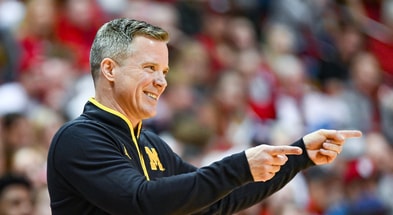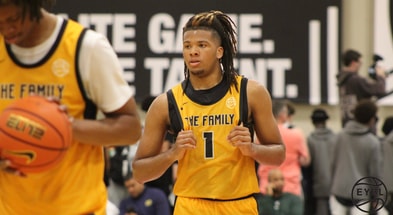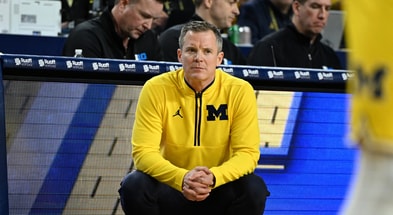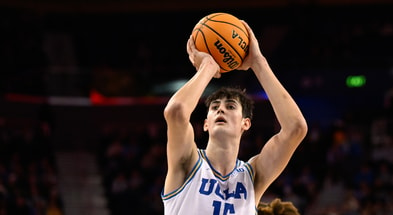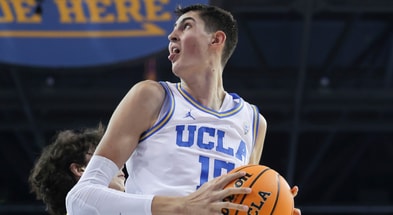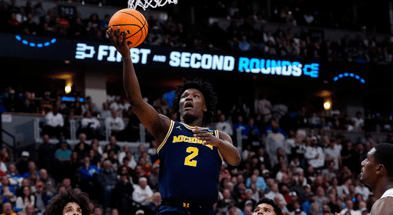Working to improve spacing and pace has kept Michigan basketball's staff up at night

Michigan Wolverines basketball has had a rocky start to the season. The Maize and Blue are 4-3, with losses to Seton Hall, Arizona and North Carolina, and wins over Buffalo, Prairie View A&M, UNLV and Tarleton State.
One of Michigan’s several issues early on in the season has been three-point shooting, with the Wolverines connecting on just 29.4 percent of their long range looks. Fifth-year senior guard Eli Brooks, who’s also had to serve as the primary ball handler at times, is the only player on the team with more than 10 three-point attempts and a three-point shooting percentage better than 30 percent (41.9).
RELATED
• Wolverine TV: Frankie Collins, Phil Martelli preview game vs. San Diego State
The lack of perimeter threats, of course, has consequences. Michigan hasn’t had as much success getting the ball inside, either, with the court being clogged up due to defenders collapsing on sophomore center Hunter Dickinson and the team’s other big men. Seven games in, the scouting report is in, and Dickinson has only gotten six and five shots off in the last two games, respectively.
“That’s what teams are doing — they’re watching and coming up with scouting reports. And I’m not this analytic guy, but the numbers are the numbers,” associate head coach Phil Martelli said. “It’s always been that way. If you look at our numbers, you can say, we can space them right now because the ball’s not going in the basket, and then the second part of that is that they’re mimicking what they see other teams do.”
The other aspect to getting good spacing, Martelli said, is playing at a swift pace and creating a flow within the offense. Michigan is averaging 17.4 seconds per possession (194th fastest in the country) and ranks 288th in adjusted tempo on Kenpom.
“You have to have pace, a smooth game, and not this almost root canal without novocaine,” Martelli said. “And I’m being honest, that’s the way it feels right now. There’s a grind, and we want to get in a flow.”
That starts with fifth-year senior point guard DeVante’ Jones, who has struggled early in his Michigan career after transferring from Coastal Carolina. Jones has a measly 1.4 assist-to-turnover ratio and has looked uncomfortable bringing the ball up and getting the Wolverines into their offense when faced with pressure.
Martelli explained how he and the staff want Jones to have more control of the offense.
“We want him to get lane touches,” Martelli said. “We want the ball to get into the paint, and not just through passing to Hunter or to [freshman forward] Moussa [Diabate]. We want to make sure we get lane touches, and then he can spray the ball around.
“Right now, we’re seeing a little bit more of that each practice, but that’s what we’re really looking for. That’s the key — not worrying about shots, but making sure that the ball gets into the teeth of the defense and that we can create our offense off of penetration and pitching the ball.
“The situations that he’s in in practice, it’s there. But it’s practice. When the popcorn’s popping and the lights are bright and everybody’s watching, you want to make sure there’s a carryover from practice. He’s spending an extraordinaire amount of time with [assistant coach] Howard Eisley — film breakdowns, conversations on the floor. Obviously, [head coach] Juwan [Howard] is a film aficionado, so all hands on deck here, and complete confidence that DeVante’ will get there, sooner rather than later.”
Dickinson, too, has to be in the right spots and make it easier for his guards and wings to find him down low.
Top 10
- 1Breaking
Rivals x On3
On3 acquires Rivals
- 2Hot
Paul Finebaum
Josh Heupel job security
- 3Trending
Bill Belichick
CBS News fires back at UNC coach
- 4
Jordan Travis
Retires from football
- 5
Ian Schieffelin
Joining Clemson football team
Get the On3 Top 10 to your inbox every morning
By clicking "Subscribe to Newsletter", I agree to On3's Privacy Notice, Terms, and use of my personal information described therein.
“We’re looking at it; we’re working on it and putting in wrinkles to address that,” Martelli said of Dickinson’s limited touches. “We want to make sure that Hunter is part of that, sprint the floor, get out, get down the floor, maybe we beat the other big guy down the floor and get a position that we want.”
So, the pacing problem has been recognized for weeks now. Why hasn’t it been fixed? Michigan is on its way to getting it corrected, Martelli said. It’ll take time, and he revealed two keys to getting it done.
“That keeps us up at night, getting this pace,” he noted. “First, there has to be an insistence, and then there has to be a commitment from the five players on the floor. So the coaching staff has to insist on it every single time down the floor, the players have to commit to it, they have to commit to acknowledging when they can’t make that pass and take themselves out of the game — then we get a fresher body in there.”
It also starts on the other end of the floor, where Michigan has been inconsistent and flat-out bad in its setbacks to Arizona and North Carolina.
“We have to become a better defensive rebounding team, which means that overall we have to become a better defensive team,” Martelli explained. “Our numbers are pretty good, but they’re a little bit inflated. I think, straight up, it’s a commitment to insist upon a spring every single time down the floor for all five guys. And if they then have the responsibility, as long as they’re held accountable, they can’t look sideways when we say, you didn’t sprint that time, and we want to get somebody in there that’s fresh.”
In the long run, Martelli believes the right solutions will be found and, more importantly, implemented.
“Absolutely, completely confident that with the teaching, the drill work that we’re doing and the character of the players — not just the skill of the players — we will get there,” he said.
The next opportunity to make some strides comes Saturday afternoon against San Diego State (1 p.m. ET on CBS). The Aztecs slot seventh in the country in adjusted defensive efficiency, though, so it won’t be an easy test.

